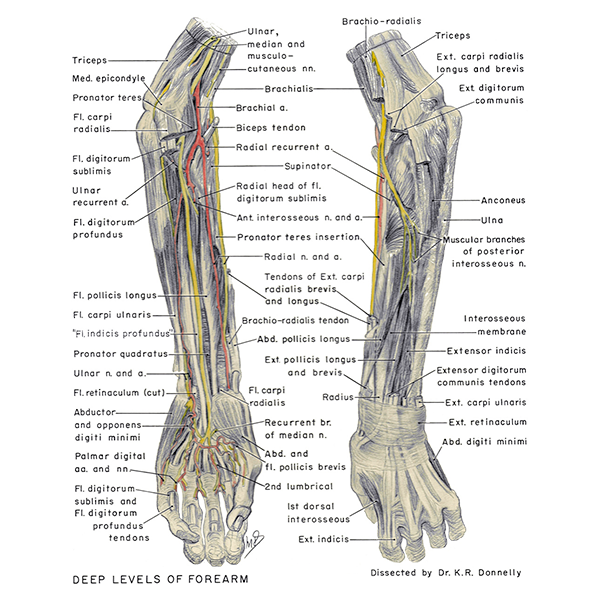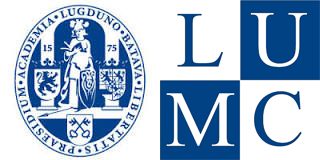
nid: 59707
Additional formats:
None available
Description:
Deep anatomy of forearm. The deep muscles of the forearm and their innervating nerves can be appreciated in this image. English labels.
Retrieved from website Clinical Anatomy of the University of British Columbia.
Retrieved from website Clinical Anatomy of the University of British Columbia.
Anatomical structures in item:
Uploaded by: rva
Netherlands, Leiden – Leiden University Medical Center, Leiden University
Antebrachium
Epicondylus medialis humeri
Arteria recurrens ulnaris
Musculus flexor digitorum profundus
Musculus flexor pollicis longus
Musculus flexor carpi ulnaris
Musculus pronator quadratus
Nervus ulnaris
Arteria ulnaris
Abductor digiti minimi of hand
Musculus opponens digiti minimi (Manus)
Arteria radialis
Musculus supinator
Musculus pronator teres
Musculus abductor pollicis longus
Retinaculum musculorum extensorum manus
Musculus extensor indicis
Musculus anconeus
Creator(s)/credit: Department of Anatomy, University of British Columbia, UBC; Dr K.R. Donnelly, UBC
Requirements for usage
You are free to use this item if you follow the requirements of the license:  View license
View license
 View license
View license If you use this item you should credit it as follows:
- For usage in print - copy and paste the line below:
- For digital usage (e.g. in PowerPoint, Impress, Word, Writer) - copy and paste the line below (optionally add the license icon):
"U.Br.Columbia - Drawing Deep anatomy of forearm - English labels" at AnatomyTOOL.org by Department of Anatomy, University of British Columbia, UBC and K.R. Donnelly, UBC, license: Creative Commons Attribution-NonCommercial-ShareAlike. Created for: Department of Anatomy (now Department of Cellular and Physiological Sciences) at the University of British Columbia. Source: website Clinical Anatomy, http://www.clinicalanatomy.ca
"U.Br.Columbia - Drawing Deep anatomy of forearm - English labels" by Department of Anatomy, University of British Columbia, UBC and K.R. Donnelly, UBC, license: CC BY-NC-SA. Created for: Department of Anatomy (now Department of Cellular and Physiological Sciences) at the University of British Columbia. Source: website Clinical Anatomy, http://www.clinicalanatomy.ca




Comments